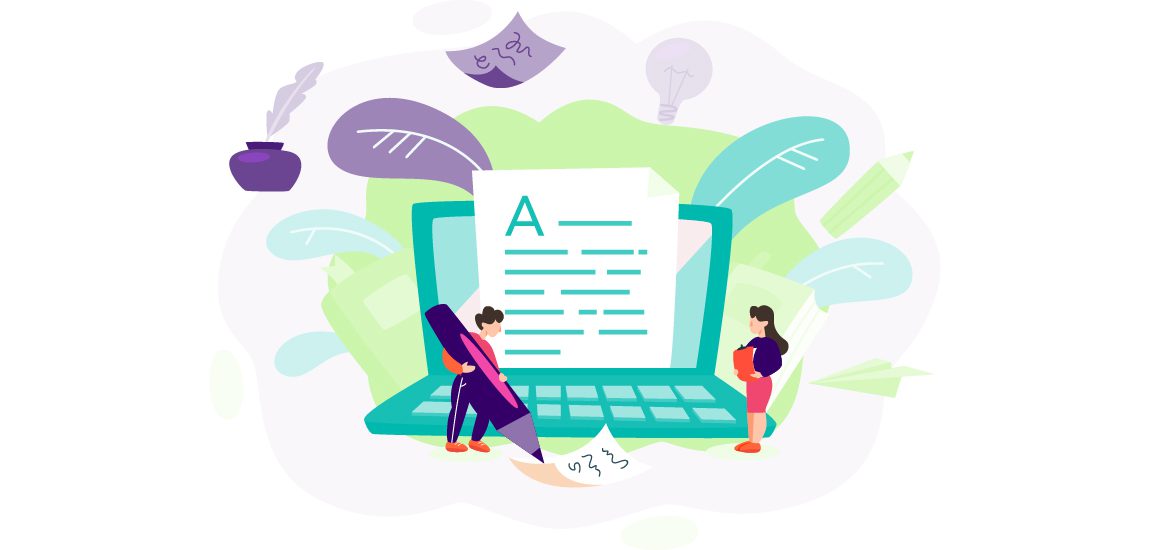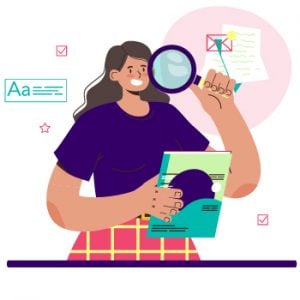
How Good is Google Translate French to English?
Google Translate French to English
The COVID-19 Pandemic has bound everybody to their homes. People are operating their businesses and companies from their homes. They do this via the Internet, establishing an online presence. Online businesses may not work out flawlessly, but still, people are at an advantage that their businesses are still running. Everybody is subjected to stay at home due to this Pandemic to avoid transmission, some people have also become lazy. People who never had a proper schedule to sort things out in a day are on the verge of getting lazier than ever.
Talking about this, let’s not forget Language and the Translation Industry. Covid 19 has collapsed the Global economy. It has greatly impacted the household income of the majority of the people, especially of the ones belonging to the Middle class. To survive through these times of global crisis, these people try to save as much money as possible. Thus, if they need document translation services of any type, they will most likely go for free translation services, among which Google Translate is one. They think of Google Translate as a quick and free translation service. So, they will go for it, but let’s see what translation quality Google Translate offers.
When we talk about languages, there are many languages that people can adapt to for communication. Because English is a Global language and many people prefer it, they usually only give English a platform. There is a large majority of English speakers, followed by many French speakers. So, there’s a huge demand for French-to-English translations.


Unfolding
Google Translate is ideal for people of all ages, especially teens. In teenage life, people come across many people from different backgrounds. Google Translate helps ease communication with such people. Also, it is very beneficial for students who are graduating in Linguistics. They can get some basic help from Google Translate for their Assignments. Google Translate is also a great choice for people who do not demand professional translations and do not aim to pay huge translation costs. People who do not want to indulge themselves in filling out long forms for the traditional translation process, either due to being busy or lazy, are also advantaged by using Google Translate.
How good is Google Translate “French to English”?
If you want to measure how good translations Google Translate can deliver, study the following aspects of your translation. Studying these aspects would help you determine the standard of the current translation that Google Translate delivers. It will also help with the future translations that a translation company delivers to you.
Translation Standards: You should consider studying the standards of Google Translate Translation. There is a high potential that the translation provided by Google Translation would contain errors. These errors would probably not be grammatical errors but rather just mistranslations of proper nouns and other terms. Make sure that there are no translation errors because it is what determines the standards of a translation.
Delivery Time: Delivery Time is not a problem when using Google Translate for translations, but an Internet connection can be. Ensure you have a stable Internet connection to avoid losing the relevant translation text. You can do the accurate translations once there is no server or Internet error.
Authenticity and Credibility: Google Translate translations are not credible, unlike other certified and notarized translations. On the contrary, at least you can improve it by eliminating all kinds of errors and giving it a professional look. Also, the authenticity of the translation should not be relied upon. Google Translate may intermingle some terms, affecting the overall authenticity of the translation. Make sure you check it and avoid it.
Are Google Translate Translations certified?
No, the translations that Google Translate provides are not certified. Google Translate is an online service for real-time translations of conversations, messages, and even some documents into the target language, but when it comes to documents that are of a higher level, we would not suggest you use a service like Google Translate because it can deal with professional documents neither does it certify its translations. Professional and business documents contain some common terms that Google Translate may not understand.
As a result, Google Translate would translate Proper Nouns or technical terms you do not mean to translate. It can even mistranslate some other words. It is Google Neural Machine Translation. Since it does not have a human translator to deliver translations, its translations would also not be certified. Google has automatic translation tools for alternate translations. It also offers automatic webpage translation and speech translation.
The Credibility of Google Translate Translations
When we talk about credibility, it is very clear that translations that Google Translate delivers have nothing of it. Google Translate is just a casual online translation service. We know that giving translation credibility is a certification or notarization. Since Google Translate translations are not certified or Notarized, they hold little credibility. People of all ages prefer Google Translate for translations, but not people who aim for professional standards. Google Translate helps students complete their homework, but it can not deliver professional document translations such as Birth Certificates, Driving Licenses, Wedding Certificates, Death Certificates, Divorce Certificates, Translation, etc.


French to English Translation Services
If you browse the Internet a little, many translation companies offer exceptional French to English Translation Services. For businessmen and companies, these companies are perfect as they aid them in easy communication with their clients, suppliers, and contacts around the Globe. But Google Translate is the best choice for the younger generation who does not aim for professional translations and wants just casual translations from French to English. If you are looking for a Translation service, read this: How to get a certified French Translation Service in New York.
French to English Translation Services excels in providing quality translations for various file formats, including marriage certificates, using online translators and skilled English translators. The emphasis on official translation ensures accuracy in converting entire documents from a foreign language to English, showcasing proficiency in language translation and a commitment to delivering precise and reliable results.
The Demand for French to English Translations
England and France have been both long-term enemies and close allies. It is no wonder that both of these countries exchange a large number of tourists daily. Both English and French belong to the European family of languages but are significantly different from each other. To make conversations easy, people would need French-to-English and English-to-French translation services. If someone is in a hurry or wants to translate concise phrases, they would choose Google Translate to help themselves with these types of translations without paying a single penny and wasting a single second. Google Translate proves to be very beneficial when someone wants quick translation services costing no money.
The demand for French-to-English translations escalates as individuals and businesses seek to overcome language barriers in dealing with official documents. Whether it’s a legal document or an entire PDF file, the need for accurate translation of documents from the original French document to English has prompted the use of online tools to bridge language pairs and ensure that the translated content retains the precision and nuances of the native language in both the original and official language.
Wrap up
In conclusion to everything we have stated so far, we think that by using Google Translate, you can be at an advantage. This is because these services do not cost a single buck. Moreover, these services are instant. You can get your translations into the target language in seconds as you do not need to fill out forms and wait for a couple of days. As a sincere opinion, we think that Google Translate is very good and quick, but it probably can not deliver translations according to professional standards. We suggest you hire a professional translation company to translate sensitive documents of higher levels. This is because Google Translate translations can sometimes contain errors and inaccuracies.

Balancing Machine & Human Translation Quality
In today’s globalized world, effective communication often relies on tools like Google Translate, which helps bridge language barriers by translating text between various languages. For instance, if you’re working with a document originally written in French and need it in English, a document translator can facilitate this process. While online document translators like Google Translate offer quick translations, they may not always match the accuracy and nuance achieved through human translation. Therefore, understanding the strengths and limitations of both machine and human translators is essential for producing high-quality translations that accurately convey the original message.
When evaluating translation tools, the focus often shifts to translation quality and how effectively these tools perform their translation functions. While translation software has made significant strides in accuracy, it’s important to remain cautious about potential translation errors that can arise, especially in complex texts. High-quality translation software can provide a solid starting point, but for nuanced or specialized content, human review is often necessary to ensure that the final output meets the desired standards of quality translation. Balancing the efficiency of translation tools with the meticulousness of human oversight can help mitigate issues and enhance overall translation accuracy.
Enhancing Translation Across Languages & Regions
In the diverse realm of translation, having access to tools that cater to both common languages and foreign languages can significantly enhance communication. For example, French translators are often sought after for their expertise in translating between French and other widely spoken languages. However, tools like Conversation Mode in translation apps can bridge gaps even in less common languages, such as Tok Pisin. This mode facilitates real-time dialogue, making it easier to communicate across different linguistic backgrounds and ensuring that even less commonly spoken languages receive the attention they deserve.
When dealing with translation needs that span diverse regions, such as Hong Kong and the Eastern Huasteca, the quality of translation becomes paramount. For example, if you need to translate PDF documents from Cantonese, spoken in Hong Kong, into Huastec, used in the Eastern Huasteca, using a reliable translate app is essential. While these apps can offer natural translations, the complexity of the languages and the specificity of regional dialects can sometimes challenge their accuracy. Therefore, ensuring high quality in translations often requires a combination of advanced translation tools and human expertise to effectively convey the intended meaning across different languages and cultures.
Advancements in Translation Tools & Quality
In the field of translation technology, the evolution of automatic translation tools has significantly advanced over recent years. In 2016, groundbreaking work such as “A Neural Network for Machine Translation” introduced new methods that improved the accuracy of rule-based machine translations. Additionally, the concept of “Zero-Shot Translation” emerged, allowing models to translate between language pairs without direct training data. Despite these advancements, achieving a correct translation remains a challenge, as nuances and context can sometimes lead to errors. Thus, while these tools represent significant progress, ongoing refinement and human oversight are crucial to ensure the relevance and correctness of translations.
When working with global translation services, such as those provided by the United Language Group, understanding the breadth of language coverage is essential. For instance, translating a document into a specific destination language requires not only accurate translation but also consideration of language scores that assess the quality and reliability of the translation. Additionally, dealing with speculative language—terms or phrases that are uncertain or hypothetical—can pose unique challenges. Ensuring that the translation effectively conveys the intended meaning in the destination language, while maintaining high language scores, underscores the importance of both comprehensive coverage and nuanced understanding in achieving effective communication.
Universal Language and Translation Advances
As the world becomes increasingly interconnected, the concept of a universal language remains an appealing idea. Although there is no single language that serves as a universal medium, the idea of an auxiliary language—like Esperanto—has been proposed to bridge the differences between languages. English, often considered a global lingua franca, frequently appears in international communication and English language articles, reflecting its broad usage. Companies like Google Inc. have harnessed technology to support multilingual communication and address the challenges posed by language differences. Despite these advancements, the quest for a truly universal language continues to highlight the complexities and rich diversity inherent in human communication.
In the realm of translation technology, resources like the Google Translate Blog often showcase advancements in tools such as Google Docs, which integrates seamlessly with translation services. Since 2011, the development of competitors like Microsoft Bing Translator has also contributed to the evolution of translation tools. Bilingual dictionaries and qualitative analysis play a crucial role in improving the accuracy of translations for phrases, ensuring that subtle nuances are preserved. These tools, alongside ongoing innovations, help users navigate language barriers more effectively, highlighting the dynamic progress in translation technology and its impact on global communication.
Advanced Translation Tech & Bilingual Tools
In modern translation technology, features like conversations with interpreter mode enhance real-time communication by providing immediate translations during dialogues. When using devices with dual screens, such as those equipped with an outer screen and a dual screen button, users can seamlessly manage their interactions and translations. These tools are designed to handle complex phrases and varied sentence structures, ensuring that the translations not only capture the essence of the conversation but also produce fluent sentences that reflect natural language use. This integration of advanced features helps bridge communication gaps more effectively, making interactions smoother and more intuitive.
In the field of translation, utilizing bilingual text corpora is essential for developing accurate and contextually relevant translation tools. These corpora, consisting of bilingual text corpora, provide valuable data for training algorithms to recognize and translate sets of characters from one language to another. Optical character recognition (OCR) technology further enhances this process by converting printed or handwritten text into digital format, allowing for seamless integration into translation systems. While online document translators can efficiently handle these tasks, human translation remains crucial for ensuring the nuanced accuracy of translations in the target language. Combining these technologies and human expertise optimizes translation quality and effectiveness.
Advanced Translation Tools & Regional Needs
Translation software has evolved to include a variety of advanced translation functions, enhancing its utility for diverse language needs. For instance, users can select their preferred language to streamline translations, whether it’s for common languages or less widely spoken ones like Tok Pisin. Features such as Conversation Mode are particularly useful for real-time communication, enabling seamless dialogues in languages like French, with the help of skilled French translators. This mode facilitates smooth, interactive conversations, bridging gaps between different linguistic backgrounds and ensuring that even specialized or regional languages are effectively accommodated.
In Hong Kong, where diverse linguistic needs often arise, the use of translation apps has become essential for managing PDF documents in various languages. These apps offer natural translations that strive to preserve the nuances of the original text, enhancing the quality of translation. However, achieving relevant translation is crucial, as it ensures that the translated content accurately reflects the intended message and context. The effectiveness of these tools in delivering high-quality translations often depends on the complexity of the document and the capabilities of the app, underscoring the importance of selecting reliable translation solutions for accurate and contextually appropriate results.
Advancements in Translation & Language Services
The field of translation technology has seen remarkable advancements with the introduction of various automatic translation tools. Rule-based machine translations, which rely on predefined grammatical rules, have been complemented by more sophisticated approaches such as those discussed in the 2016 study, “A Neural Network for Machine Translation.” This neural network model, alongside innovations like Zero-Shot Translation, allows for accurate translations between language pairs that the system hasn’t explicitly been trained on. Despite these advancements, achieving a correct translation remains a challenge, as it requires not only robust algorithms but also contextual understanding to ensure that the translated language conveys the intended meaning accurately.
The United Language Group is at the forefront of providing comprehensive translation services, offering extensive language coverage that includes both widely spoken and less common languages. When translating to a destination language, their focus on language scores ensures high-quality and accurate results. This meticulous approach helps address the challenges of translating speculative language—phrases that are uncertain or hypothetical—by striving for clarity and precision. While the idea of a universal language remains an aspirational goal, the United Language Group’s commitment to excellence in translation services aims to bridge language gaps and facilitate effective communication across diverse linguistic landscapes.
Evolution in Translation Tools & Techniques
As the world of translation continues to evolve, the concept of a 65th language, or an auxiliary language, often comes into play to address the differences between languages. For instance, tools like Microsoft Bing Translator and innovations in Google Docs, which began significant advancements around 2011, are instrumental in bridging these gaps. English language articles frequently discuss how these technologies help mitigate language barriers by providing accessible translations across various languages. These advancements reflect a growing effort to enhance communication and understanding in our increasingly interconnected global society.
In the realm of translation technology, bilingual dictionaries play a crucial role in providing accurate translations for phrases, especially when dealing with complex phrases that require nuanced understanding. Tools like those incorporating a Dictionary – Qualitative Analysis offer detailed insights into language nuances and context, enhancing the quality of translations. Additionally, features such as conversations with interpreter mode, often displayed on an outer screen in dual-screen devices, facilitate real-time communication and aid in translating intricate dialogues. This combination of advanced dictionaries and interactive translation modes helps bridge communication gaps effectively, ensuring that both simple and complex linguistic needs are met with precision.
Advancements in Translation Tools & Features
In the evolving landscape of translation technology, tools such as dual screen buttons on devices offer enhanced functionality for managing translations. These tools can display bilingual text corpora, which are essential for understanding different sentence structures and generating fluent sentences. When combined with optical character recognition (OCR), these systems can effectively translate and digitize text from physical documents, ensuring that translations are both accurate and contextually relevant. By leveraging bilingual text corpora, these advanced tools help in maintaining the quality and fluency of translations, providing users with a more seamless and precise translation experience.
Modern translation tools, such as the Translate app, have significantly enhanced the way we handle language barriers by offering features like Conversation Mode, which facilitates real-time communication. These tools rely on sophisticated algorithms to process sets of characters, aiming to provide natural translations that closely mirror human translation in fluency and accuracy. Users can set their preferred language to streamline interactions, ensuring that translations are contextually appropriate and seamlessly integrated into conversations. Despite advancements in technology, human translation remains crucial for capturing nuanced meanings and cultural subtleties, reinforcing the importance of combining both automated and human expertise in effective communication.
Advancements in Translation Quality & Tools
The quality of translation has greatly evolved with the development of advanced technologies. Rule-based machine translations, which rely on predefined linguistic rules, were foundational but limited in scope. However, breakthroughs such as those described in the 2016 paper, “A Neural Network for Machine Translation,” have significantly improved translation accuracy. These neural networks, along with innovations like Zero-Shot Translation, enable systems to perform correct translations even between language pairs they haven’t been directly trained on. This progress ensures more relevant translations by better capturing context and nuance, thus enhancing overall translation quality and effectiveness in a wide range of applications.
The quest for a universal communication solution often brings up the concept of a 65th language, or an auxiliary language, designed to bridge the differences between languages. Although no single language has achieved this status, tools like Microsoft Bing Translator have advanced significantly since 2011, improving their ability to handle diverse linguistic challenges. English language articles frequently discuss these advancements, highlighting the role of technologies that leverage Dictionary – Qualitative Analysis to provide more accurate translations. These tools aim to minimize translation errors and better address the nuanced differences between languages, contributing to more effective and clear communication across various linguistic landscapes.
Revolutionizing Translation with Advanced Tech
In today’s advanced translation systems, features like conversations with interpreter mode are revolutionizing real-time communication by providing instantaneous, contextually appropriate translations. Devices equipped with a dual screen button further enhance this experience by allowing users to view and interact with translated content on one screen while maintaining ongoing dialogue on the other. This setup is particularly effective in managing complex phrases and sentence structures, ensuring that the translation maintains the original message’s intent. By facilitating the creation of fluent sentences, these technologies bridge language gaps seamlessly, making international conversations more natural and efficient.
Optical character recognition (OCR) technology has significantly advanced the process of translating printed and handwritten text into digital format. By converting sets of characters from physical documents into editable text, OCR facilitates the analysis of sentence structure and the incorporation of content into bilingual text corpora. This technology is crucial for maintaining accuracy in translation tasks, as it helps preserve the original text’s syntax and context, allowing for more reliable and nuanced translations. By integrating OCR with bilingual text corpora, translation systems can better understand and process complex sentence structures, ultimately leading to more precise and contextually appropriate translations.
FREQUENTLY ASKED QUESTIONS
How accurate is Google Translate for French to English translation?
Google Translate has improved significantly over the years with advancements in neural machine translation. For French to English translations, it generally provides a good level of accuracy for standard phrases and sentences. However, for complex texts or specialized jargon, nuances may be lost, and errors can occur. It’s always a good idea to double-check translations, especially for critical documents.
Can Google Translate handle idiomatic expressions from French to English?
Google Translate can translate many idiomatic expressions, but its accuracy depends on the complexity and commonality of the expression. While it has become better at handling idioms thanks to neural network improvements, some idiomatic phrases may still be translated too literally. For the best results, it’s useful to provide additional context or consult a human translator for highly nuanced phrases.
How can I improve the quality of French to English translations in Google Translate?
To improve translation quality, provide complete sentences and context rather than isolated words or phrases. Using simple and clear language helps Google Translate produce better results. Additionally, reviewing and editing the translation manually or using professional translation services for important content can ensure accuracy.
Does Google Translate support French regional dialects and variations?
Google Translate generally supports standard French well, but it might struggle with regional dialects and variations, such as Quebecois French or African French. Regional expressions and slang may not always be accurately translated. For these cases, providing context or using specialized translation services may be more effective.
Can I use Google Translate to translate documents from French to English?
Yes, Google Translate offers a feature to translate entire documents. You can upload PDF, Word, or other text documents directly into Google Translate, and it will translate the content from French to English. Keep in mind that while this feature is convenient, document formatting and complex structures might not always be perfectly preserved.

Sorry, the comment form is closed at this time.